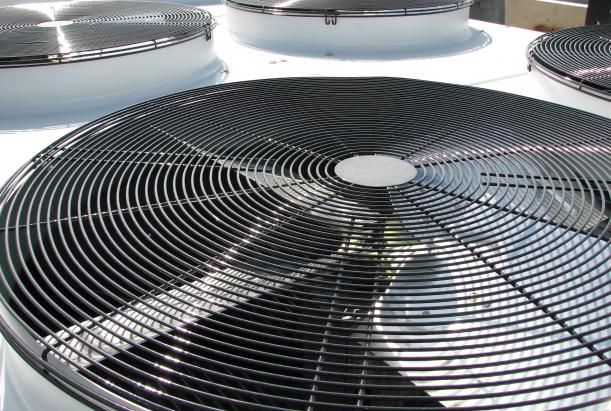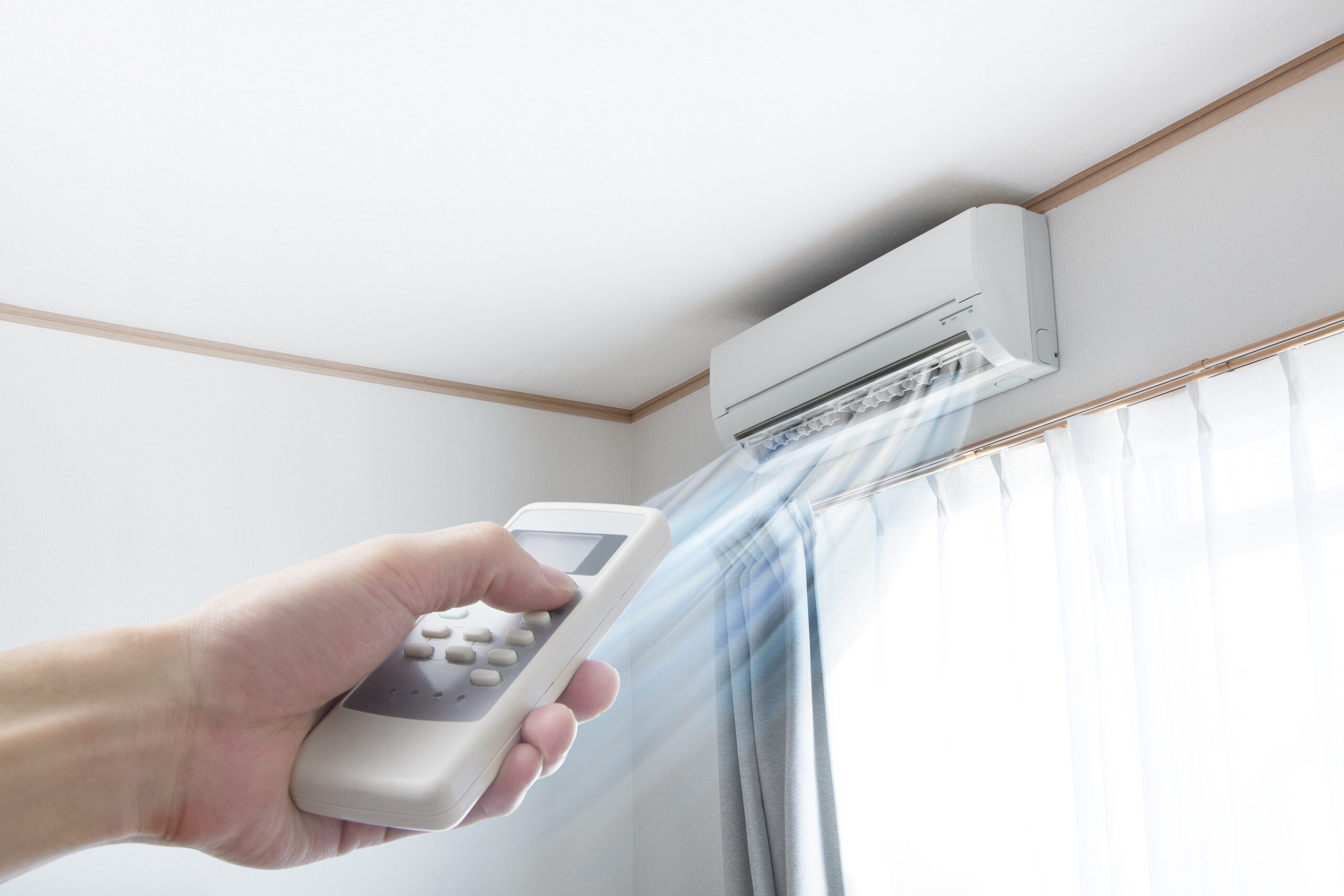Let’s Clear the Air! How to Improve Indoor Air Quality
Improve indoor air quality in your home with one or all of 15 ways from Blue Frost Heating & Cooling!
Have you noticed a lot of “For Sale” signs popping up in front yards lately? Spring is in the air, and the real estate market is in full gear. As an HVAC guy, these signs cause me to think about what families moving into new homes might be moving into. Indoor air quality is an issue for new homeowners, but it should be an issue for current homeowners as well. Here’s why.
What is Lurking inside your Home?
Indoor air quality is seasonal. It peaks in July and August and stays at high levels all the way through December. Levels are the lowest during late winter and spring.
Poor indoor air quality makes life miserable especially for those afflicted with asthma and allergies. What may go undetected or barely noticeable for some, can cause major health issues forothers.
The dust in your home can contain unpleasantries, such as mold anddust miteparticles. Home appliances (space heaters, oven ranges, stoves, furnaces, fireplaces, water heaters) release unhealthygassesand particulates into the air. If anyone in your family suffers due to allergies or asthma, it behooves you to improve the quality of the air at home and alleviate symptoms. Here’s how.
Improve Indoor Air Quality by Eliminating Dust and Contaminants in the Home
1. Purchase an Air Cleaner
Air cleaners remove small dust particles that can get deep into the lungs, providing much-needed relief. They do a great job of keeping dirt from accumulating in the furnace and the indoor evaporator coil section of your air conditioner. This has the added benefit of decreasing utility bills and eliminating repairs. Three great choices for air cleaners include the whole-house air purifiers fromAprilAire, Honeywell, and Trane.
2. Focus on the Bedroom
Since almost a third of our lives are spent sleeping, target improving indoor air quality in the bedroom. Buy zip covers to reduce dust mite exposure. Mattresses, as well as stuffed animals, carpeting, and upholstered furniture, can accumulate a significant amount of dust mites.
3. Clean Regularly
Keeping a tidy home can help to reduce dust, mold, and pet dander, making the home a healthier place to be.
Regular vacuuming and dusting reduce the accumulation of dust around your home. Dust particles may not always be seen. Using a vacuum that has a strong suction, functioning brushes, and a HEPA filter can also be more effective. Make sure that you are picking up the dust particles that can bury into your carpeting.
Sweep and mop hardwood frequently, as well, to collect accumulating dust.
Dust often, don’t leave food out in the kitchen, and vacuum weekly at the very least.
4. Let in Some Fresh Air
As the outdoor temperature rises to moderate, open the windows, even if it is just for a short period of time. This increased air flow from outside can help rid your home of toxins that have been building up inside during the cold months.
5. Change Your Air Filter
Change your air filter methodically and faithfully. How can you tell whether or not your filter needs to be changed? Take a look at the air ducts. See any dust and dirt that has built up on the registers? If you do, change your air filter. Changing the filter can reducethe number ofallergens that build up within the HVAC system. If you are tired of changing your air filters and are looking for a better way to keep the air fresh in your home, install a permanent filter that can be easily cleaned. The Trane CleanEffects Air Filter traps more allergens and dust than regular filters. It has a removable cartridge that can be washed and reused.
6. Keep Air Returns Clear
Make sure to keep the air return vents accessible. Some people don’t like the sight oftheir air return. But keep in mind, if you place furniture in front of the air inlets, your HVAC system will need to work that much harder in order to cool or heat the room. If you don’t like the sight of the air return shaft, there are cosmetic solutions available at most home improvement stores.
7. Have Your Ductwork Inspected
Properly sealed ductwork helps air flow within your home. Leaky duct work causes less warm or cool air to get where you intend for it to go. And that makes your system work harder to achieve the same levels of efficiency and costs you more money.
According to the US Dept. of Energy, Energy Star, and the EPA, the average residential duct system leaks 20 to 40 percent of already cooled or heated air into the ceilings, walls, and basement of your home. This situation can be directly caused by improperly sealed ductwork. If you think this may be happening in your home, contact your HVAC specialists at Blue Frost Heating & Cooling to perform an inspection. A trained HVAC professional can seal your ductwork to improve energy-efficiency in your home.
8. Maintain a Healthy Humidity Level
Keep the humidity level around 30 to 50 percent in your home. It can work wonders for indoor air quality. Dust mites and mold can become problems when the moisture levels reach higher than 30 to 50 percent.
Dehumidifiers and air conditioners help control moisture levels in the summer months. An exhaust fan or cracking a window when cooking, using the dishwasher, or bathing will help control moisture levels, too. Fix leaky plumbing. Make sure your dryer is vented to the outside. Don’t overwaterhouseplants. All of this will help control moisture levels immensely.
9. Improve your Home’s Ventilation
Like everything else, an HVAC system needs to be properly maintained to do its best work for you. Following a regular schedule to replace filters can ensure that quality air is distributed evenly throughout your home. If you have any questions, it’s always a good idea to contact Blue Frost Heating & Cooling at (630) 444-0860.
10. Install Devices into your Existing Heating and Cooling System
Devices that clean and purify the air in your home can be installed into your existing HVAC system.These include electronic air cleaners, special UV light purifiers or even air exchangers.
11. Use Natural Cleaning Products
While the zesty lemon or pine scent of your cleaners may give you a sense of accomplishment, many of these fragrances are accomplished through the smell of potentially harmful chemicals. Cleaners, air fresheners, dryer sheets and laundry detergents emit chemicals.
There are some things that you can do:
– Buyfragrance-freeor naturally scented laundry products and cleaners that don’t use artificial fragrances.
–Consider adding indoor plants. Plants are natural air purifiers. They add more oxygen into the air and help improve air quality.
– Stop using aerosol sprays.
12. Test for Radon
Radon is a colorless, odorless gas that is the leading causeoflung cancer among non-smokers in the U.S. It can enter the home through cracks and openings in floors and walls or even penetrate right through concrete basement floors and walls. Home testing is the only way to know it’s there. The EPA provides a lot of information about this gas.
13. Smoke Outside
If you smoke, smoke outside. Secondhand smoke is a cancer-causing carcinogen that lingers in upholstery and clothing.
14. Rid Your Home of the Possibility of Mold
Look for and remove standing water. Be attentive to water leaks behind walls and fix all leaks as soon as you can. Prevent the buildup of potentially toxic mold.
15. Dispose of Toxic Chemicals
Many towns and counties have specific days when you can safely dispose of known toxic chemicals in the home. Some even havedrop-offareas that can be visited anytime. Free household hazardous waste collection events require little in the way of preparation of these chemicals and can significantly reduce your home of toxins. Items to consider getting rid of include a variety of chemical cleaners, pesticides, fertilizers, paints, auto fluids, and other toxic materials in use in homes, automobiles, and yards.
Living in a house with poor air quality can have a variety of adverse health effects, including eye irritation, fatigue, dry throat, sinus congestion, dizziness, and nausea. The effects are worse for people with allergies and asthma. High levels of contaminants can cause more serious illnesses.
With improved indoor air quality, your home will be healthier and more comfortable to live in. It will be more efficient, saving you money on utility bills, too. Making one or more of the improvements listed above will give you and your family benefits to enjoy for a long time.
Make your home healthier and more comfortable to live in. Call Blue Frost Heating & Cooling at (630) 444-0860 and improve your indoor air quality today!
Blue Frost Heating & Cooling
Cooling, Plumbing, Heating
Your trusted leader in home comfort and customer service since 1992.
Call (630) 444-0860 or click here for maintenance, repairs or installation.
Request Service

Our Process
Get to know our quick installation process of a device tailored to your needs
- In-Home Consultation
- Free In-Home Estimate Provided
- Timely Installation Scheduled
- Quality Installation Performed
- Enjoy Your Enhancement



